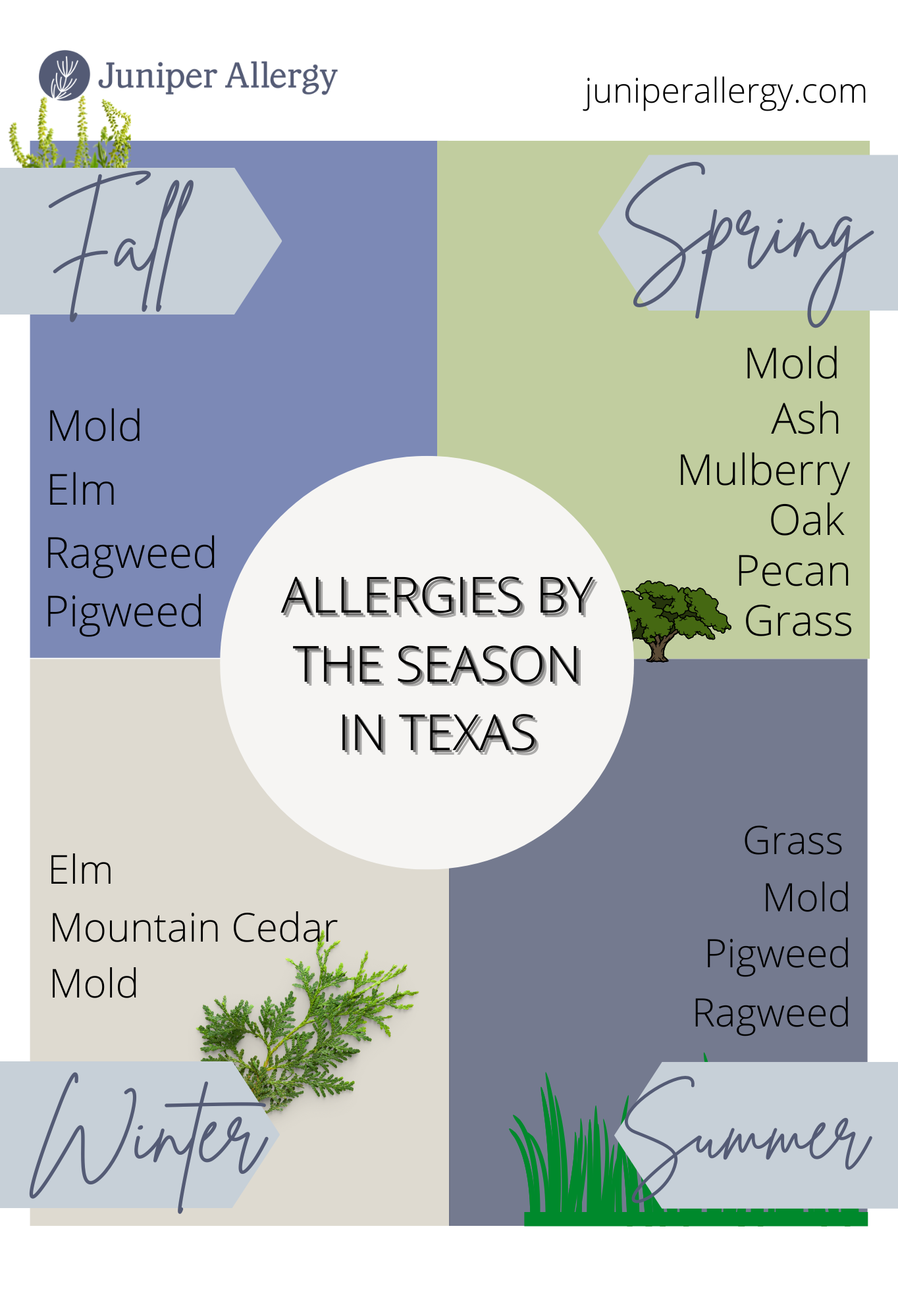Allergy Season San Antonio
When you live in San Antonio, especially in and around Stone Oak, it is not uncommon to hear the fall and spring seasons referred to, more commonly as, Mountain Cedar Season and Oak season, respectively, for the pair’s menacing allergens that leave many of us sneezing, wheezing, coughing, and rubbing our eyes nearly year-round. The Alamo City is now the fifth-worst U.S. City for those with seasonal allergies, according to a 2022 report from the Asthma and Allergy Foundation of America (AAFA). The designation stems mostly from San Antonio’s year-round warm climate. “We have a double-whammy here in South Texas,” says Dr. Amanda Trott, Board-Certified Allergist and Owner at Juniper Allergy. “Not only do we not have deep freezes that can halt pollen from being spread in the air but we have a ton of space inundated with plants, trees, shrubs and more that pollenate year-round.” At Juniper Allergy, we see a lot of patients who tell us they moved to Texas and suddenly developed allergies. It is the exposure that triggers an allergy. So it is not uncommon to move to new state and find that after a period of time allergies kick in. It only takes one exposure to potentially develop an allergy to something in our environment. The AAFA’s 10 worst cities for environmental allergies include:
- Scranton, Pennsylvania
- Wichita, Kansa
- McAllen, Texas
- Richmond, Virginia
- San Antonio, Texas
- Oklahoma City, OK
- Hartford, Connecticut
- Buffalo, New York
- New Haven, Connecticut
- Albany, New York
For the daily pollen count in and around Stone Oak, San Antonio’s hill country, the Dominion, Alamo Heights, Bulverde, Spring Branch, and Schertz areas, follow Dr. Trott and the Juniper Allergy Team on Facebook and Instagram. 
